Overview
Brazil, the largest country in South America, is renowned for its vibrant culture, lush rainforests, majestic waterfalls, and iconic landmarks.
From the Amazon rainforest and sun-soaked beaches to historical colonial towns and modern metropolises, Brazil offers a diverse range of experiences for every traveler.
Whether you are an adventurer, a history buff, or a beach lover, the magic of Brazil will captivate you.
Let’s explore the best 15 tourist attractions in Brazil that showcase the essence of this fascinating country.
Table of Contents
1. Christ the Redeemer, Rio de Janeiro
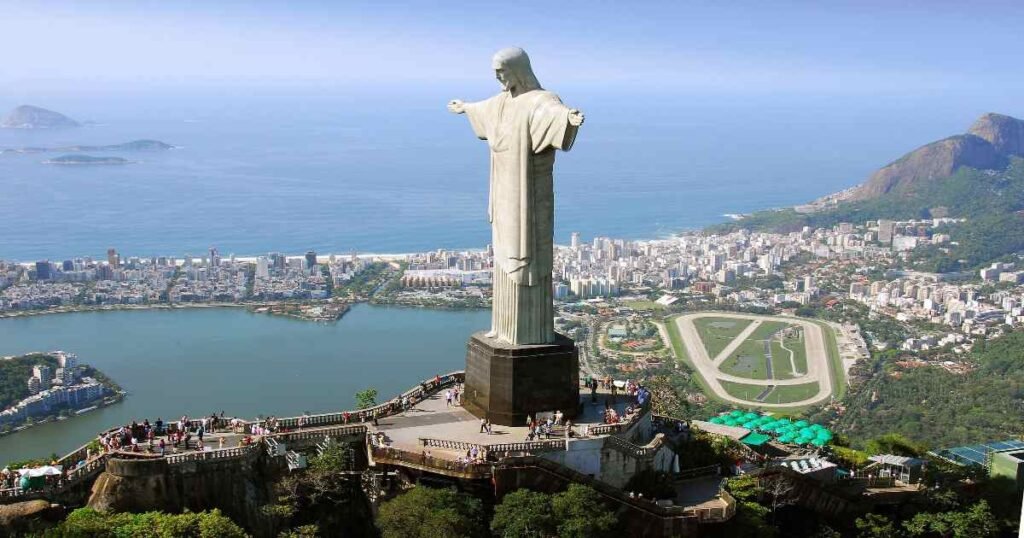
Standing atop the Corcovado Mountain, Christ the Redeemer is one of the New Seven Wonders of the World and a globally recognized symbol of Brazil.
Historical and Cultural Significance: Constructed in 1931, this 98-foot-tall statue represents Brazil’s deep-rooted Christian heritage and welcomes visitors with open arms.
Unique Features: Visitors can enjoy panoramic views of Rio de Janeiro’s stunning landscape, including Sugarloaf Mountain, the sprawling beaches of Copacabana and Ipanema, and the city’s bustling streets.
Best Time to Visit: Visit early in the morning or late afternoon to avoid crowds and enjoy breathtaking views at sunrise or sunset.
Travel Tips:
- Transportation: Take the cogwheel train or a shuttle from Largo do Machado to reach the base of the statue.
- Accommodation: Stay in Rio’s Zona Sul (South Zone) for easy access.
- Local Customs: Be respectful of the religious significance of the statue.
2. Iguazu Falls
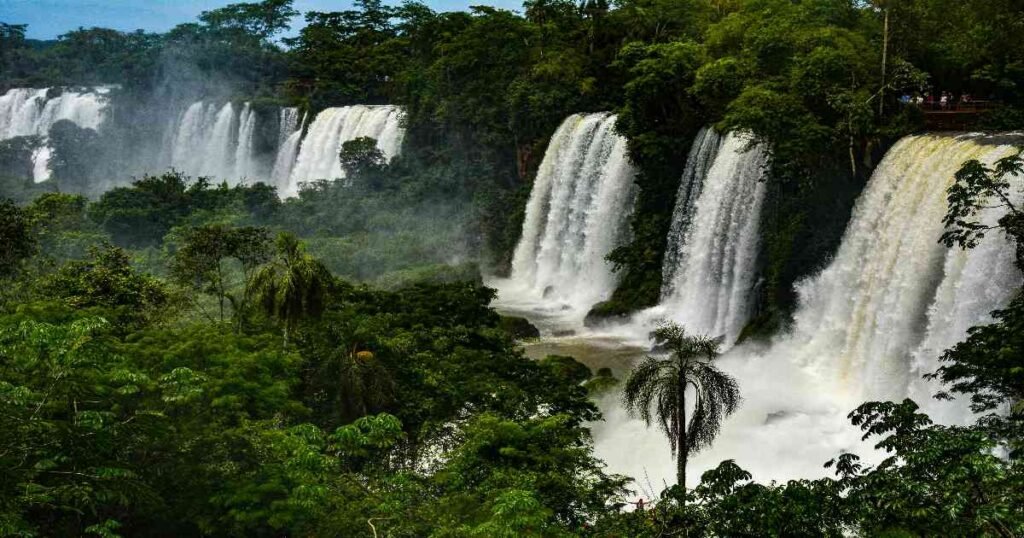
Iguazu Falls is a massive waterfall system, comprising 275 individual falls, making it one of the most awe-inspiring natural wonders on the planet.
Historical and Cultural Significance: The falls have been a UNESCO World Heritage Site since 1986 and symbolize the powerful beauty of South America’s natural landscape.
Unique Features: The Brazilian side offers sweeping panoramic views of the entire falls. Walk along the catwalks to experience the thundering roar and refreshing mist.
Best Time to Visit: Spring (September-November) and autumn (March-May) offer pleasant weather and fewer crowds.
Travel Tips:
- Transportation: Fly into Foz do Iguaçu International Airport and take a shuttle or taxi.
- Accommodation: Foz do Iguaçu has options ranging from budget-friendly hotels to luxurious resorts.
- Local Customs: Be prepared for mist and moisture, especially if visiting the Garganta del Diablo (Devil’s Throat).
3. Amazon Rainforest and Manaus
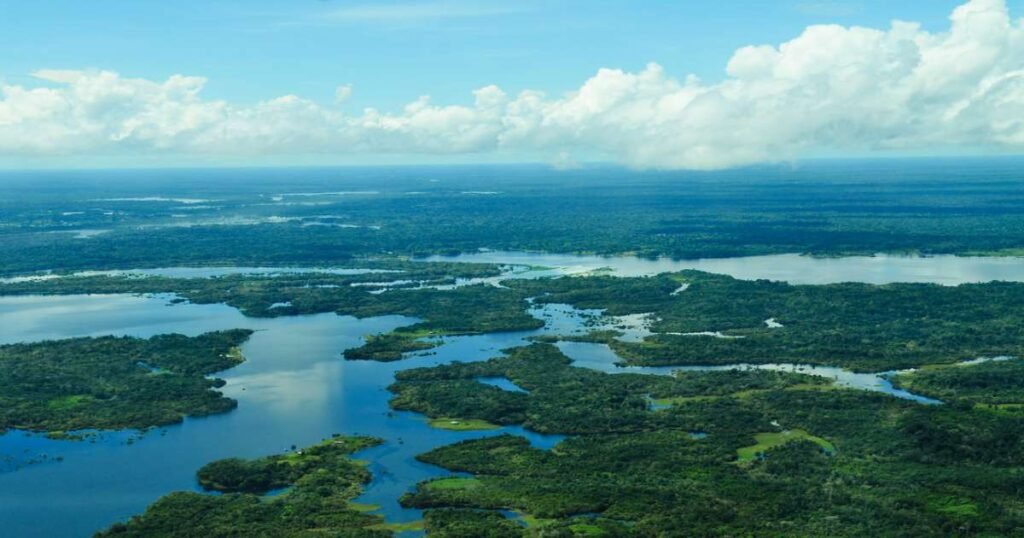
Introduction: The Amazon Rainforest is the world’s largest tropical rainforest and offers unmatched biodiversity and adventure opportunities.
Historical and Cultural Significance: The Amazon is known as the “Lungs of the Earth” and holds immense ecological significance. Manaus, its gateway city, played a major role in Brazil’s rubber boom in the 19th century.
Unique Features: Explore jungle lodges, river cruises, indigenous communities, and the “Meeting of the Waters,” where the Negro and Solimões rivers meet but don’t immediately mix.
Best Time to Visit: June to November (dry season) for better wildlife spotting.
Image Alt Text: “Lush green Amazon Rainforest surrounding a calm river with a small boat.”
Travel Tips:
- Transportation: Fly to Manaus, then join guided river tours.
- Accommodation: Stay in eco-lodges or jungle hotels for an immersive experience.
- Local Customs: Be respectful of indigenous traditions and customs during community visits.
4. Salvador’s Pelourinho District
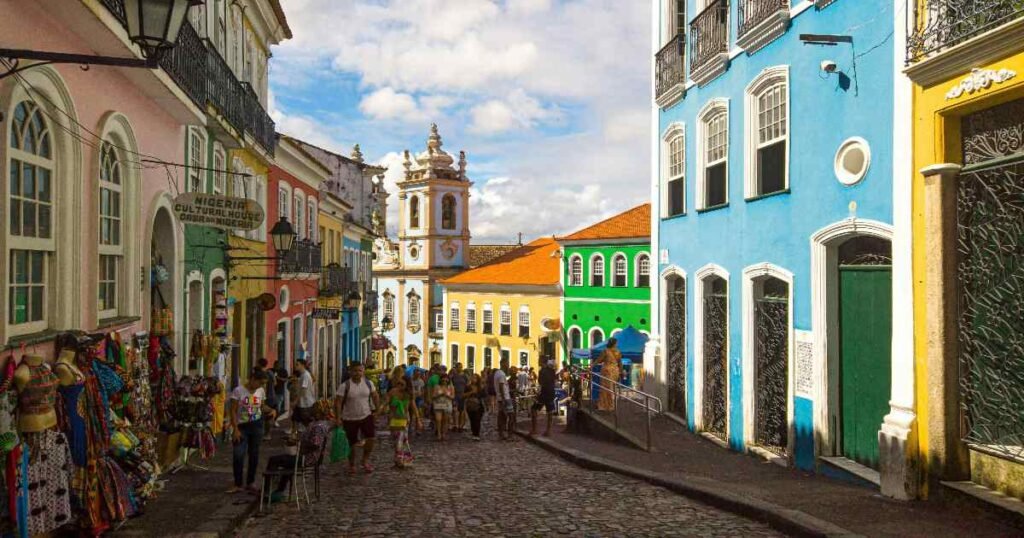
The colorful streets of Pelourinho, Salvador’s historic center, offer a lively blend of Afro-Brazilian culture, colonial architecture, music, and cuisine.
Historical and Cultural Significance: Once the heart of the Portuguese colony, Pelourinho is a UNESCO World Heritage Site known for its vibrant festivals and capoeira performances.
Unique Features: Walk along cobbled streets, explore colonial churches, and experience the electric energy of local music and street performances.
Best Time to Visit: February for the Salvador Carnival or the summer months (December to March).
Travel Tips:
- Transportation: Use Salvador’s public transportation system or walk around the historic district.
- Accommodation: Stay in a pousada (inn) within the Pelourinho district for authenticity.
- Local Customs: Join in samba and capoeira circles, but be mindful of pickpockets in crowded areas.
5. Lençóis Maranhenses National Park
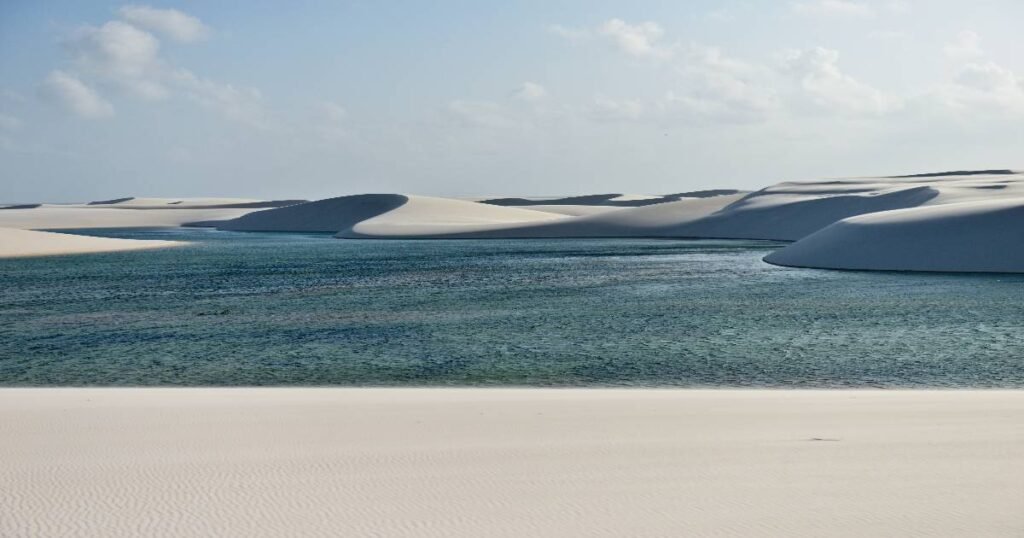
Lençóis Maranhenses is a surreal landscape of endless white sand dunes interspersed with blue and green freshwater lagoons.
Historical and Cultural Significance: The park’s unique ecosystem is shaped by seasonal rains that form temporary lagoons between dunes.
Unique Features: Visitors can swim in the clear lagoons, trek across dunes, and witness stunning sunsets over the sandy horizon.
Best Time to Visit: Between May and September, when the lagoons are full.
Travel Tips:
- Transportation: Fly to São Luís and take a bus or tour to Barreirinhas, the gateway to the park.
- Accommodation: Stay in Barreirinhas or nearby Atins for easy park access.
- Local Customs: Respect conservation rules and avoid leaving trash.
6. Ouro Preto
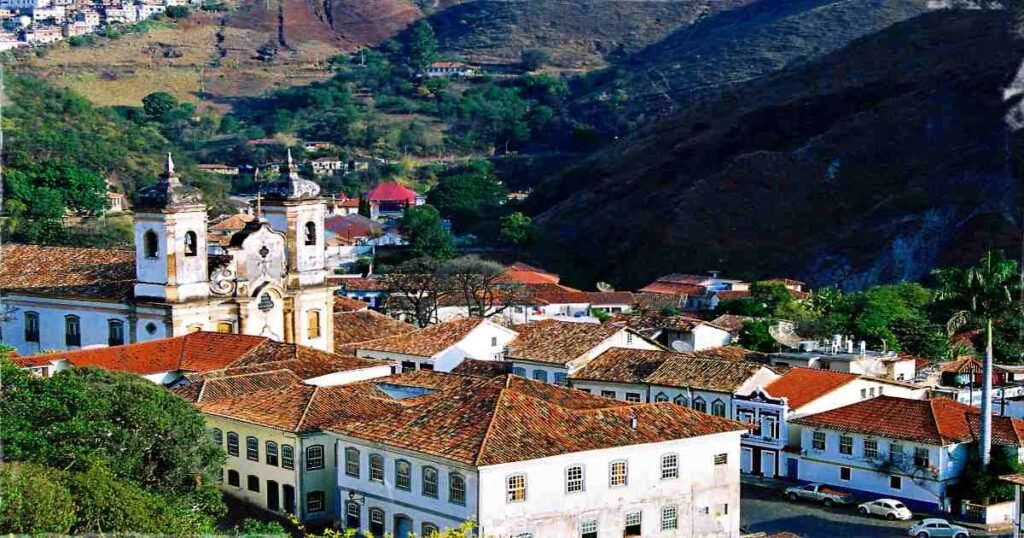
Ouro Preto, meaning “Black Gold,” is a well-preserved colonial town that thrived during Brazil’s gold rush.
Historical and Cultural Significance: Declared a UNESCO World Heritage Site, Ouro Preto’s cobbled streets and baroque architecture reflect Brazil’s colonial past.
Unique Features: Visit churches adorned with gold leaf, museums dedicated to the gold rush era, and historic mines.
Best Time to Visit: During the dry season (April to September).
Travel Tips:
- Transportation: Take a bus from Belo Horizonte.
- Accommodation: Stay in a colonial pousada for a historic ambiance.
- Local Customs: Respect heritage sites by not touching or damaging preserved structures.
7. Florianópolis Beaches
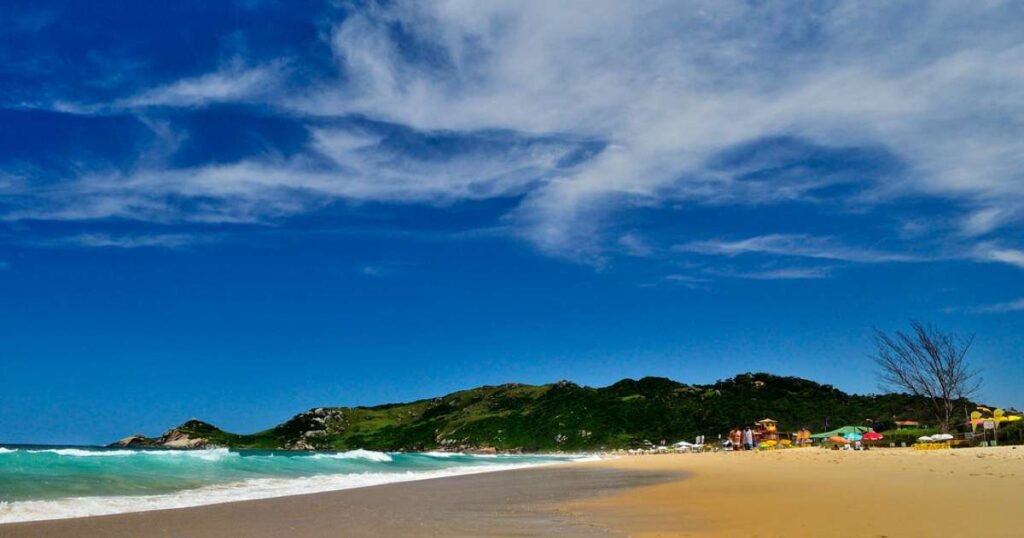
Known as “Floripa,” Florianópolis offers over 40 beaches, each with its unique vibe, from surfing hotspots to family-friendly shores.
Historical and Cultural Significance: The island has a mix of Portuguese colonial influence and modern beach culture.
Unique Features: Surf at Joaquina Beach, enjoy nightlife at Jurerê Internacional, or relax at Praia Mole.
Best Time to Visit: Summer months (December to March) for warm weather and vibrant beach culture.
Travel Tips:
- Transportation: Rent a car to explore multiple beaches.
- Accommodation: Choose from beachside resorts, hotels, or rental houses.
- Local Customs: Be mindful of beach etiquette and environmental conservation.
8. Chapada Diamantina National Park
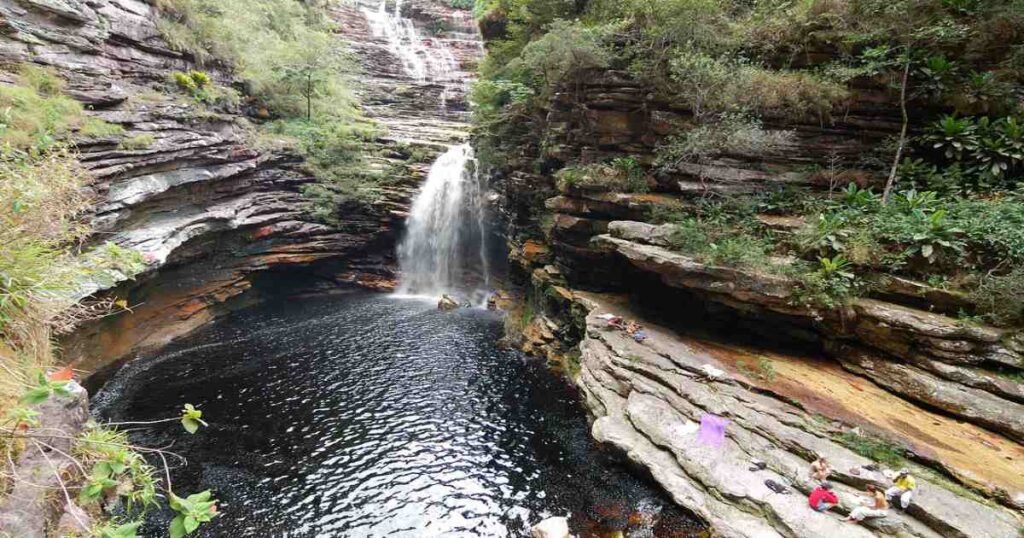
This stunning national park offers a paradise for hikers and adventure enthusiasts, with waterfalls, caves, and dramatic plateaus.
Historical and Cultural Significance: Formerly a diamond mining hub, the park now focuses on ecotourism and the preservation of its unique biodiversity.
Unique Features: Hike to the top of Morro do Pai Inácio, explore the Poço Encantado cave, and take a dip in Cachoeira da Fumaça.
Best Time to Visit: Between April and October for cooler hiking conditions.
Travel Tips:
- Transportation: Fly to Lençóis and take local guides for trekking routes.
- Accommodation: Stay in guesthouses or eco-lodges within park towns.
- Local Customs: Hire guides to navigate safely, as many trails are remote.
9. Paraty
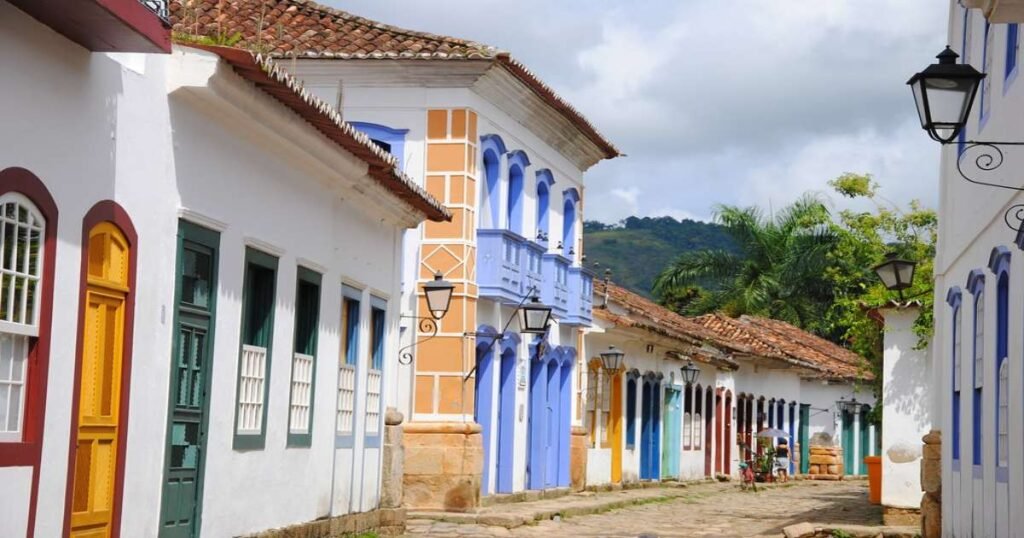
Nestled between the mountains and the sea, Paraty is a colonial town famous for its cobbled streets, well-preserved architecture, and breathtaking coastal scenery.
Historical and Cultural Significance: Established during the Portuguese colonial period, Paraty was an important port during Brazil’s gold rush. It retains much of its charm through colonial-era churches, forts, and quaint houses.
Unique Features: Visitors can explore charming pedestrian streets, take boat tours of the stunning bay dotted with islands, and enjoy a mix of art galleries, craft shops, and seafood restaurants.
Best Time to Visit: April to June and September to November for pleasant weather.
Travel Tips:
- Transportation: Drive or take a bus from Rio de Janeiro or São Paulo.
- Accommodation: Stay in a historic pousada or boutique hotel.
- Local Customs: Wear comfortable shoes for walking on the cobblestones and try local cachaça, a popular Brazilian spirit.
10. Fernando de Noronha Archipelago
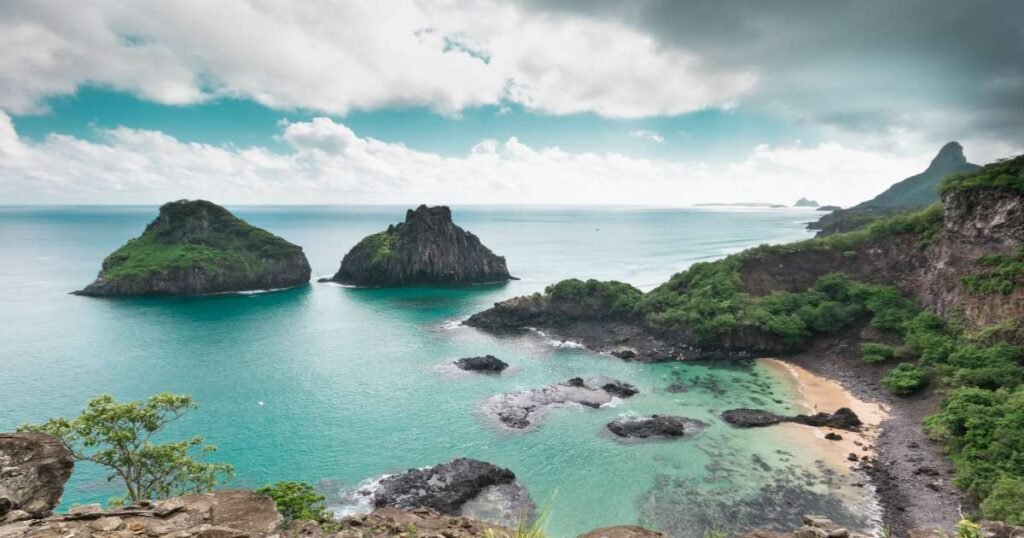
This remote paradise of 21 islands is a UNESCO World Heritage Site, known for pristine beaches, crystal-clear waters, and abundant marine life.
Historical and Cultural Significance: The islands have a rich history dating back to Portuguese explorers and have been used as a prison colony and military base in the past.
Unique Features: Ideal for diving and snorkeling, with the chance to see sea turtles, dolphins, and colorful fish. Relax at Baía do Sancho, considered one of the world’s best beaches.
Best Time to Visit: August to December for the best diving conditions.
Travel Tips:
- Transportation: Fly to the archipelago from Recife or Natal.
- Accommodation: Choose from eco-friendly lodges and guesthouses.
- Local Customs: Visitors must pay an environmental preservation fee upon arrival to help protect the islands.
11. Jericoacoara National Park
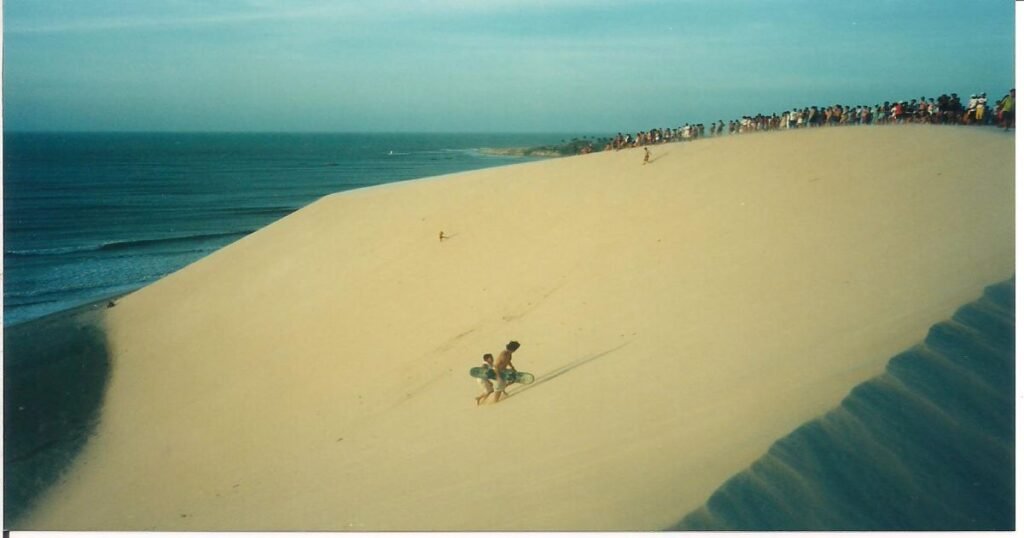
Known simply as “Jeri,” this former fishing village has become a mecca for beach lovers, windsurfers, and nature enthusiasts.
Historical and Cultural Significance: The town’s laid-back vibe has been preserved by limited vehicular access, making it a unique escape from modern bustle.
Unique Features: Enjoy pristine beaches, sand dune surfing, and the famous Pedra Furada rock formation. Watch stunning sunsets from the top of Sunset Dune.
Best Time to Visit: July to December for dry conditions and strong winds.
Travel Tips:
- Transportation: Use off-road vehicles to reach Jeri from Fortaleza.
- Accommodation: Options range from simple pousadas to luxury resorts.
- Local Customs: Enjoy a caipirinha cocktail at sunset on the dunes.
12. Pantanal Wetlands
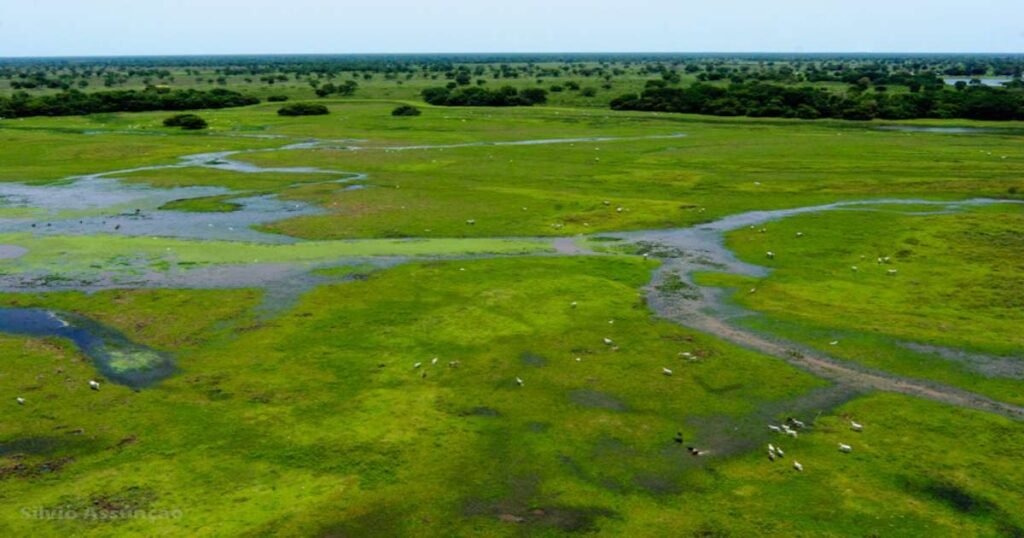
The Pantanal is the world’s largest tropical wetland and offers unparalleled wildlife viewing, including jaguars, caimans, and exotic birds.
Historical and Cultural Significance: While less well-known than the Amazon, the Pantanal is equally important for biodiversity and offers insights into traditional ranching cultures.
Unique Features: Visitors can enjoy boat safaris, horseback riding, and wildlife photography.
Best Time to Visit: Dry season (May to September) for easier wildlife spotting.
Travel Tips:
- Transportation: Fly into Cuiabá or Campo Grande and join guided tours.
- Accommodation: Stay in lodges or ranches (fazendas) with expert guides.
- Local Customs: Respect wildlife and follow safety advice from guides.
13. Recife and Olinda
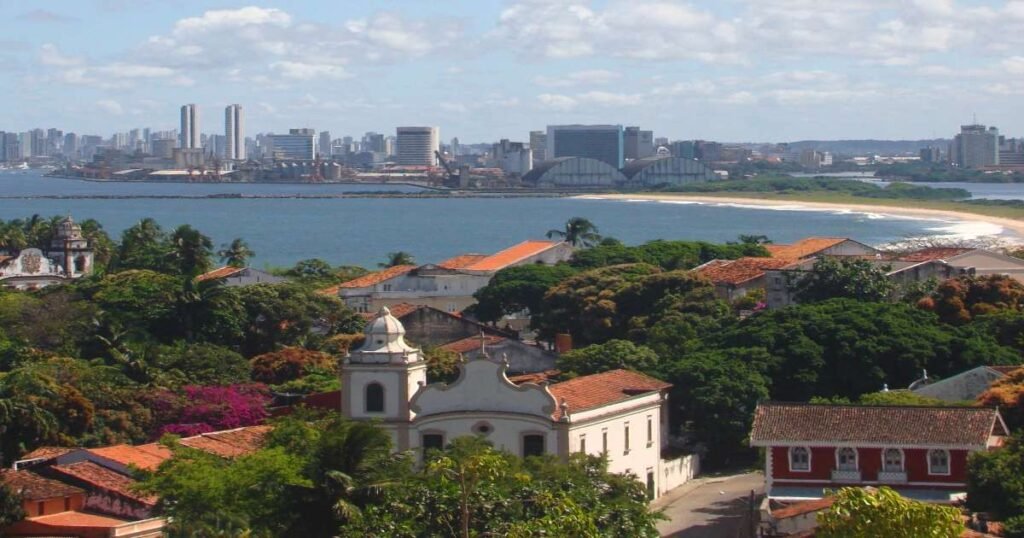
These twin cities offer a perfect blend of modern energy and colonial charm, with Recife’s vibrant culture and Olinda’s UNESCO-listed historic center.
Historical and Cultural Significance: Olinda was one of the earliest Portuguese settlements in Brazil, known for its stunning baroque churches and lively Carnival.
Unique Features: Wander Olinda’s streets filled with art and crafts, and explore Recife’s museums, beaches, and historic forts.
Best Time to Visit: February for Carnival or during the dry season (September to March).
Travel Tips:
- Transportation: Fly to Recife International Airport and take a short ride to Olinda.
- Accommodation: Choose from boutique hotels in both cities.
- Local Customs: Experience frevo, a unique Brazilian dance, and enjoy traditional music and cuisine.
14. Chapada dos Veadeiros National Park
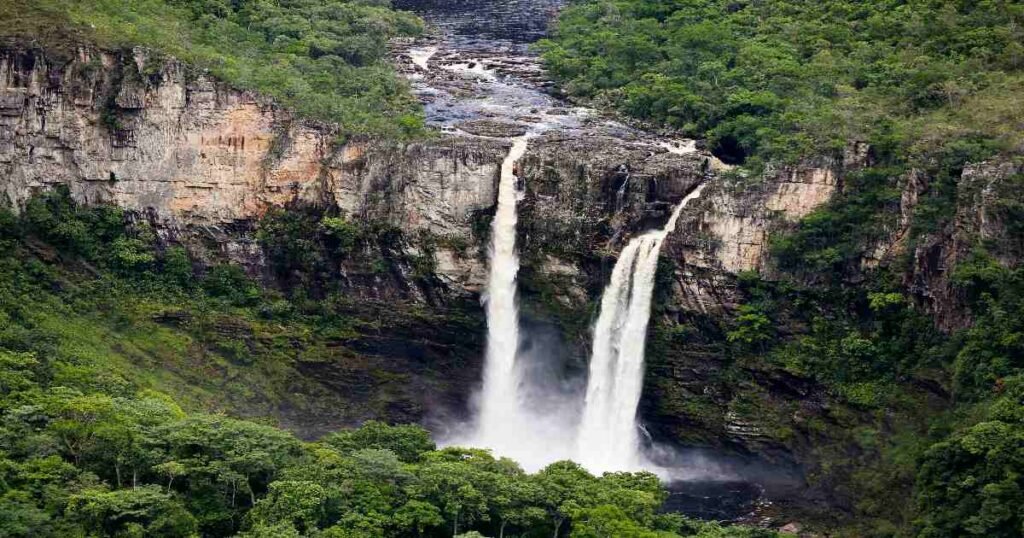
This stunning national park is known for dramatic rock formations, canyons, waterfalls, and a unique biodiversity of flora and fauna.
Historical and Cultural Significance: The park is part of Brazil’s cerrado (savanna) biome and offers insight into conservation efforts.
Unique Features: Enjoy hiking trails to cascading waterfalls and natural pools, and visit crystal mines in the surrounding areas.
Best Time to Visit: May to September for dry weather and hiking.
Travel Tips:
- Transportation: Rent a car from Brasília to reach the park.
- Accommodation: Stay in Alto Paraíso de Goiás or São Jorge village.
- Local Customs: Engage with local eco-tourism guides to learn about regional conservation.
15. Porto Alegre’s Mercado Público
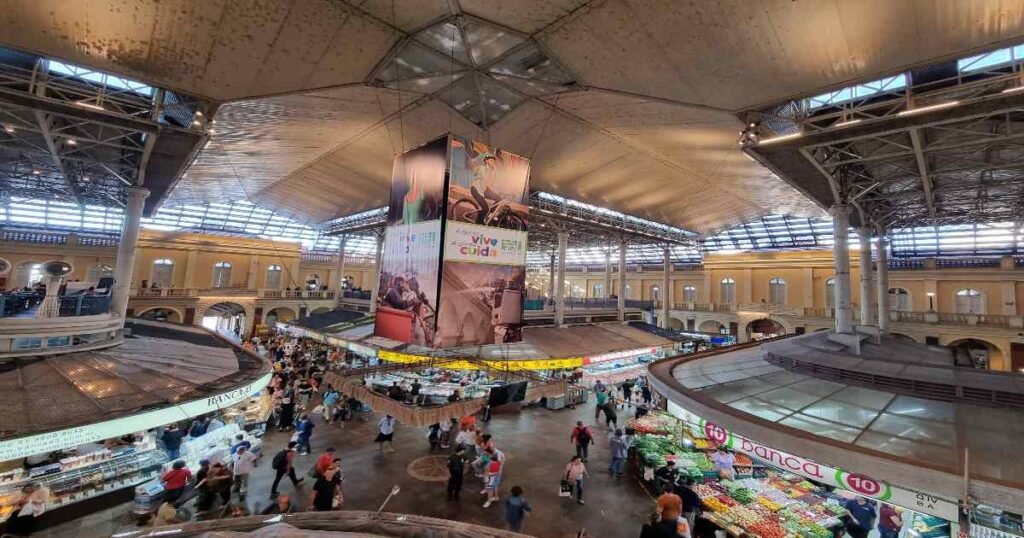
This vibrant public market is the heart of Porto Alegre’s culture, offering local cuisine, crafts, and a bustling atmosphere.
Historical and Cultural Significance: Established in 1869, the market is a symbol of Porto Alegre’s rich culinary traditions and diverse population.
Unique Features: Taste traditional dishes like churrasco (barbecue) and mate tea, and explore stalls selling everything from artisanal goods to exotic fruits.
Best Time to Visit: Any time of year, but mornings are ideal for the freshest produce.
Travel Tips:
- Transportation: Take public transport or walk to the central market.
- Accommodation: Stay in central Porto Alegre for convenience.
- Local Customs: Enjoying a chimarrão (mate tea) is a cultural tradition to try.
Also Read: Best 15 Tourist Attractions in Colombia
Conclusion
Brazil is a land of contrasts and wonders, where diverse natural landscapes, historical cities, and vibrant cultural traditions blend harmoniously.
From the sandy dunes of Lençóis Maranhenses to the colorful streets of Salvador, every corner offers unique stories and experiences.
By exploring these destinations, you’ll witness why Brazil remains a captivating country for travelers worldwide.
FAQs
What is the best time to visit Brazil?
The best time depends on the region. For most destinations, dry months (April to October) are ideal, while Amazon and Pantanal wildlife viewing is best during the dry season.
Is it safe to travel to Brazil?
Exercise caution, especially in large cities. Stick to well-known tourist areas, avoid displaying valuables, and use reliable transportation.
What currency is used in Brazil?
The Brazilian Real (BRL).
Is English widely spoken in Brazil?
Portuguese is the official language. While English is spoken in tourist areas, learning basic Portuguese phrases is helpful.
Do I need a visa to visit Brazil?
It depends on your nationality. Check with the Brazilian consulate for the latest entry requirements.

